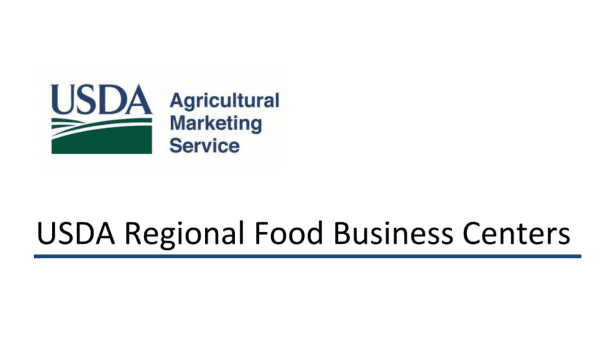USDA’s Agricultural Marketing Service (AMS) has rolled out a program to support small- and medium-sized producers and improve the food supply in underserved areas.
It’s called the Regional Food Center (RFC) Program. Congress has approved $360 million for the program over the next five years. It “will support a more resilient, diverse, and competitive food system. These Regional Food Centers will support producers by providing localized assistance to access local and regional supply chains, including linking producers to wholesalers and distributors.” USDA Regional Food Business Centers Program | Agricultural Marketing Service
Like most federal programs, this one has its layers of bureaucracy. The first are the RFCs themselves. There will be at least six of them, and four have already been specified. They will serve the Indian nations, the Colonias region (a new term for me: it refers to the territory along the U.S.-Mexico border), the Mississippi Delta and the Southeast, and high-need areas of Appalachia. Others remain to be designated.
The RFCs will administer grants, but to a very limited group of recipients: nonprofits, institutions of higher education, state agencies. Recipients will create regional networks to provide direct assistance to beneficiaries. The deadline for application is December 15.
The goals are threefold:
“Coordination – The Regional Food Centers will act as regional hubs coordinating across geographic areas with USDA, other federal, state, and tribal agencies with relevant resources, regional commissions, stakeholders, and the other Regional Food Centers. They will engage with stakeholders and partners to develop and implement strategic and funding plans for serving the region through technical assistance and capacity building. They will conduct outreach to underserved communities and businesses.
“Technical Assistance – The Regional Food Centers will provide direct business technical assistance to small- and mid-sized food and farm businesses (producers, processors, aggregators, distributors, and other businesses within the food supply chain) and food value and supply chain coordination. Each Regional Food Center will identify priority areas for technical assistance (e.g., aggregation/distribution, specialty crop processing for institutions) for the region it plans to serve.
“Capacity Building – The Regional Food Centers will provide financial assistance through business builder subawards up to $100,000 to support projects focused on regional needs and businesses that are working towards expansion and other investment. These subawards may support staff time, business planning activities, software implementation, the purchase of special purpose equipment, such as food safety, processing and packaging equipment, and value chain coordination, and other expenses.”
In short, the RFCs will work with some designated organizations (e.g., nonprofits) to determine who might be eligible for technical assistance and grants up to $100,000 for things such as purchasing specialty equipment. (There will be no money for brick-and-mortar construction, however).
Frankly, this forest of RFCS, “lead applicants,” “key partners,” “project teams,” and “collaborators” is rather confusing—especially if you are a small to medium-scale producer who already has more than enough things to do to keep your business together.
If you are seriously interested, probably the best thing to do is attend the program’s weekly online office hours, held at these times (Eastern): Meeting Registration – Zoom (zoomgov.com)
Wednesday, November 30, 2022: 4:00 PM
Wednesday, December 7, 2022: 4:00 PM
Wednesday, December 14, 2022: 4:00 PM



